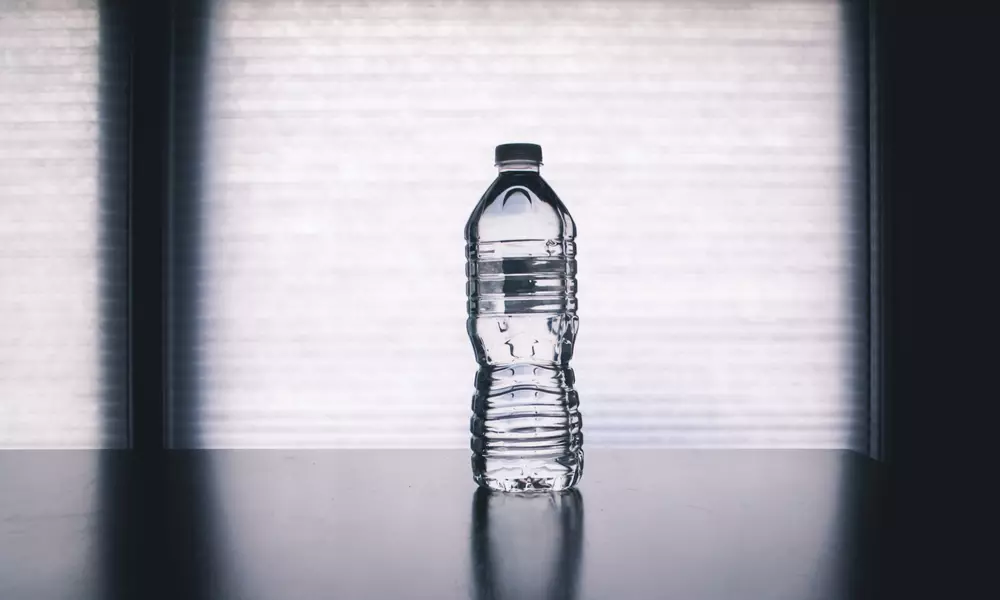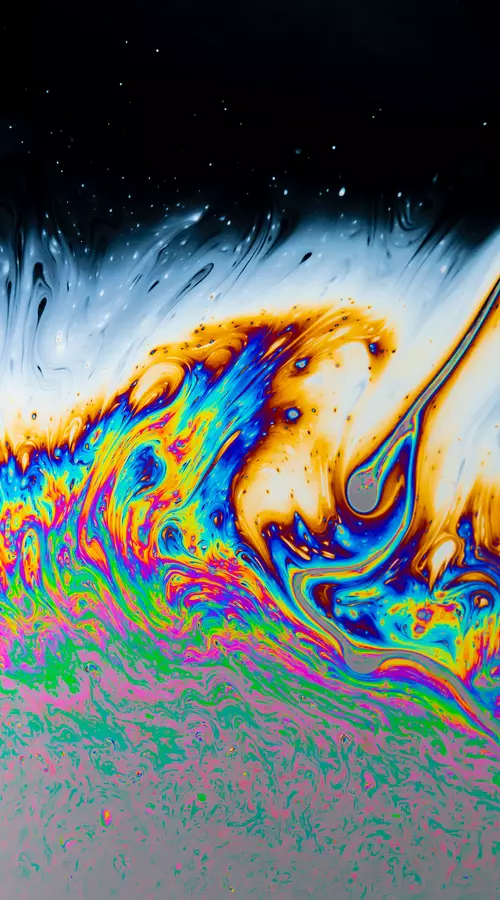
Plastic water bottles are bad for the environment in so many different ways. Plastic water bottles truly are the poster child for the world’s plastic pollution problem.
We are swimming in plastic waste, literally. Plastic is choking our oceans, choking our sea life, and you cannot escape it. Plastic waste shows up in remote parts of Antarctica. Plastic waste is in your blood. Plastic waste is in your stomach. Plastic waste is orbiting our planet.
Houston, we have a problem.
The litter part of plastic pollution gets most of the attention when thinking about how bad plastic water bottles are for the environment.
But really, global warming is the most existential environmental problem facing the planet. So what about the emissions caused by all this single use plastic?
In this post we’ll build on an interesting study by the Oregon State Department of Environmental Quality. The researchers detailed the carbon dioxide emissions associated with plastic water bottles. They also compared them, from a global warming perspective, to filling a reusable container with tap water.
Looking at the Life Cycle Impacts of Plastic Water Bottles

The researchers used life cycle analysis to answer the question of how plastic water bottles are bad for the environment.
Life cycle analysis is a scientific method for evaluating the environmental benefits and trade-offs for the entire life cycle of a product. When completing a life cycle analysis, researchers consider the environmental impacts from “cradle” to “grave.”
This means they evaluation everything from extracting the raw materials needed to make the product until you thrown it in the trash or recycle it. To use the jargon of climate scientists, they calculate Scope 1, 2, and 3 emissions for a product.
The researchers measured the environmental impacts of delivering 1,000 gallons of water to consumers. If you drank the recommended minimum of 32 ounces of water a day, you’d reach 1,000 gallons in about 11 years.
The researchers compared 3 options for consumers to stay hydrated:
- Buying single-use plastic water bottles
- Filling a refillable container with tap water (such as an refillable aluminum bottle)
- Relying on a water delivery service (that is, the ole’ water cooler from the days of yore)
How Plastic Water Bottles Are Bad For the Environment, Measured in Trees
To reach 1,000 gallons of water via plastic bottles, you need about 7500 plastic bottles (assuming 17 ounce bottles).
In terms of the global warming impact, you would create about 1100 pounds of carbon dioxide with that many bottles.
Using some simple math, you would create about 100 pounds of carbon dioxide emissions per year if you drank all of your water via plastic water bottles.
One Year of Plastic Water Bottles Cancels Two Years of a Tree’s Life
As you likely know, trees “breathe” carbon out of the air and “exhale” oxygen. A perfectly symbiotic equation for us oxygen-loving humans.
One way to think about carbon emissions is to compare it to what a tree pulls out of the atmosphere each year. This is what we have termed a “tree year worth of emissions,” or TYWE (pronounced tee-wee).
A mature tree removes about 50 pounds of carbon per year from the air.
Using this estimate, a person hydrating with plastic water bottles for a year would cancel the environmental benefit of 2 years of a mature tree “breathing” carbon dioxide out of the atmosphere.
Or, you could say that drinking plastic water bottles for a year creates the same global warming impact as cutting down two mature trees.
Our Plastic Bottle Habit Cancels the Work of 146 Million Trees

But what about all the humans buying single use plastic bottles to quench their thirst each year?
Numerous estimates can be found on the Internet about how many plastic water bottles are used each year. But 50 billion in the U.S. seems like a very conservative estimate since people bought 57 billion in 2014.
It seems safe to assume that Americans haven’t decided to give up single use plastic water bottles since 2014. But if we are wrong and missed the memo, please send us an email and we will shut down this blog.
Anyway, using really really rough numbers, the U.S. plastic bottle habit creates over 3 million metric tons of carbon dioxide a year.
In terms of tree years, the U.S. canceled the equivalent of 146 million worth of a mature tree sucking up carbon for a year. And that is from only ONE YEAR OF PLASTIC BOTTLES USED!
Oh, sorry, did we start yelling? Deep breaths, deep breaths.
Putting aside the “tree year” concept. Americans’ plastic water bottle habit produced more carbon than 146 million trees could consume in a year.
To put that in perspective, the U.S. only plants a few million trees a year, 5 million in 2018.
Now, we suggest taking these calculations with a grain of salt (or maybe a full salt shaker). But it illustrates an important point regarding the extent to which plastic water bottles are bad for the environment.
Plastic Water Bottles: Literally Made of Fossil Fuels

When it comes to plastic water bottles, most of the global warming impact comes upfront in manufacturing and delivery.
You know when you toss that plastic bottle in a recycling can? You can feel a tiny sense of relief, a lifting of some guilt deep in the recesses of your brain. “Good job me, way to recycle!”
Well, we are sorry, don’t trust that feeling.
The researchers in the Oregon study found that the majority of the energy consumed comes from making the plastic bottle. This was true across the mind-boggling number of different scenarios they tested.
Once you decide to purchase that bottle, regardless of how you get rid of it, whether in a landfill or recycling it, the bulk of the emissions have already happened.
Plastic Water Bottles – Drinking from Molded Oil
It’s important to remember that making plastic bottles is fundamentally a fossil fuel-based process. Companies burn fossil fuels in the manufacturing process, releasing emissions into the atmosphere.
But also, plastic bottles are actually made of oil – literally.
Petroleum companies extract oil from deep wells and crevices in the planet, at great expense in terms of energy. Then, those companies ship the oil all around the world, and it is heavy!
Finally, companies turn that oil into plastic resins and mold it into plastic. You are drinking water out of a fossil fuel when you drink water out of a plastic water bottle. It is kind of crazy.
The U.S. expends around 11% of its energy on finding, extracting, refining, and transporting fossil fuels. And since plastic water bottles are made from oil, buying them contributes to the demand for fossil fuels.
The U.S., in terms of tons of material, ships almost as much petroleum a year as it does all the crops grown.
The bottomline is, you can see why tossing the plastic water bottle in the recycling can does not help reduce emissions very much. Avoiding plastic water bottles is the only way to reduce the associated emissions.
This also supports the case to reduce plastic use wherever you can, whether it is reducing plastic waste in the office or at home.
The other option, which is much less impactful but still preferable, is to purchase products made of recycled material. Recycled material can avoid much of the upfront energy consumption involved in making plastic, or any other commonly recycled material, like paper and metal.
You can support companies that use recycled materials such as those making shoes with recycled plastic or rugs made of recycled plastic, or paper products made from recycled material.
Recycling Plastic Water Bottles Is Not Enough
The researchers also assumed a very high recycling rate for plastic bottles. Oregon is awesome at recycling, including plastic bottles.
But that means when you think about whether plastic water bottles are bad for the environment, it is even worse than what they found.
Specifically the researchers assumed a recycling rate of 62%. But the U.S. recycled only 9% of the plastic it produced in 2018. We could not find accurate estimates on the percent of plastic bottles recycled across the U.S. But it is safe to assume a dismally low rate.
But even if you assume recycling rates that are pretty high and likely not realistic, recycling the plastic water bottle reduced emissions by only about 16%.
However, if you use a reusable aluminum bottle, you could reduce your emissions by 80%.
Even if we recycled 100% of the plastic bottles, it still doesn’t come close to the environmental benefits of just having a reusable aluminum bottle.
In our run-down of B Corps that actually make a difference, we highlight Klean Kanteen as a great company to support. Klean Kanteen makes refillable drinking containers sold on Amazon. You can buy their aluminum refillable bottles directly from the company too.
Water Delivery Systems Are Not Much Better
If consumers choose the water cooler-style option for their water consumption, it is not much better. It generally has a similar environmental impact as plastic water bottles.
Though the researchers found situations where water delivery systems are better. If you tweak various assumptions, like distance traveled for the delivery, then it can beat out plastic water bottles.
Also, using water delivery services produce less solid waste than single use plastic bottles.
But from a holistic perspective, water delivery services have similar negative environmental impacts to using plastic water bottles.
And both water delivery services and plastic water bottles were trounced, from a sustainability perspective, by using a refillable container and tap water.
We want you to stay hydrated, get out there an exercise, hike, run, and take some water with you. But if you want to start reducing waste and fighting climate change, you should consider less harmful options.
Here at R&R we only endorse products we have owned, tested, and fell in love with. If you end up making a purchase through one of our affiliate links, we may earn a very small commission that offsets the cost of hosting, building, and maintaining this site. We encourage purchasing products directly from companies since many of the ones we highlight are small businesses. When possible, we provide the link to the company website and Amazon to provide both options for you.